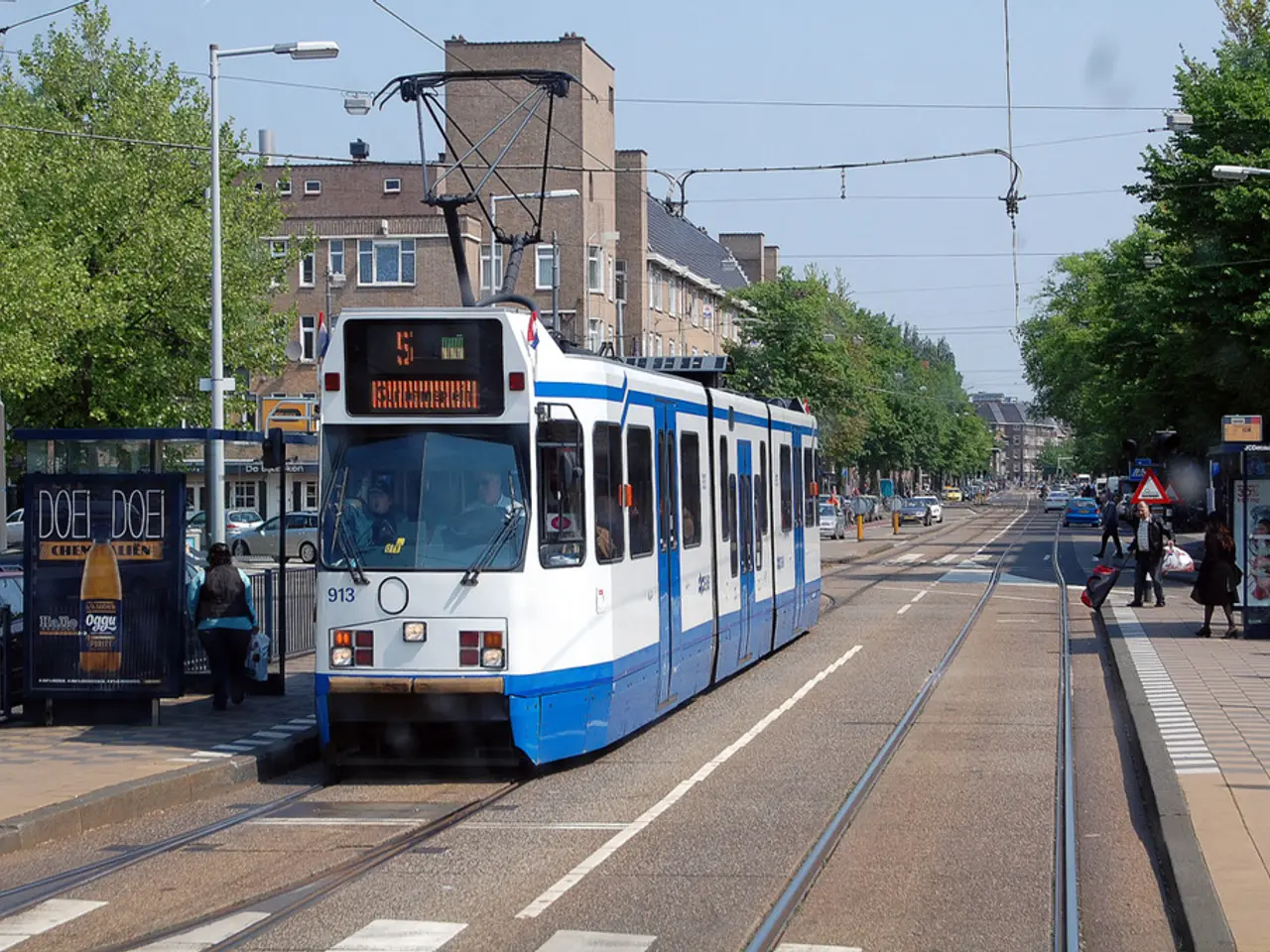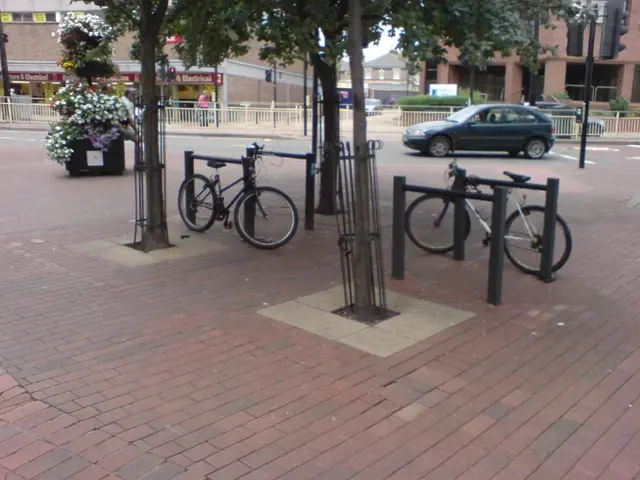Tram Navigation on Roadways: Rules That Remain Unfamiliar to Many Victorians
In the bustling city of Melbourne, Australia, the tram network is a vital part of the public transport system. With over 250 kilometres of tracks and more than 500 trams in operation, it's the largest tram network in the world.
For drivers, sharing the road with trams requires a keen eye and a respect for these massive vehicles. If a driver sees a tram approaching while already in a lane, they should move out of the lane as soon as it is safe to do so. At roundabouts, drivers must give way to trams, even if they would normally have right of way.
When a tram stops, drivers should also stop and not pass until all passengers have alighted and the doors have closed. This rule applies whether the stop is a regular one or one of the Easy Access Stops (EAS), raised roadside tram stops designed to make the network more accessible for passengers who use mobility aids, are vision impaired, or are traveling with a pram.
Vehicles can drive over these raised stops, but they must obey the same rules as at a regular roadside stop - that is, when the tram stops, you stop. Tramways can be identified by overhead signs saying "Tram Only" or featuring a tram icon and the word "ONLY", or by dividing strips (kerbing) or unbroken double yellow lines.
Hook turns are a part of Melbourne's transport infrastructure and are used to improve traffic flow in busy intersections frequented by trams. At hook turn intersections, a right turn can only be completed by approaching the intersection from the left lane, entering the intersection, and waiting in the marked area. When turning, you should only move onto the tracks up to 50 metres before the turnoff.
The Department of Transport is urging drivers to be aware of trams with its "Tram Stops You Stop" campaign. In 2021, the Department reported 2,632 road incidents or near-misses with trams, highlighting the importance of this campaign.
For passengers, waiting for a tram, you should wait on the sidewalk, not on the raised lane. Tram lanes are marked by a single unbroken yellow line or overhead "Tram Lane" signs. Drivers can legally overtake a tram in motion, but they must not impede the tram and give way at all times. You can only drive on tram lanes to avoid obstacles, or to make a right-hand turn.
Major tram corridors are linked to significant infrastructure projects like the Metro Tunnel, with key examples including Spencer Street, Park Street, Elizabeth Street, Flinders Street, Arden Street area, Laurens Street, Grattan Street, and Royal Parade. These corridors are associated with new stations such as Arden and Parkville, all significant for tram and train integration.
One notable example is St Kilda Road, where Anzac Station features raised platforms to support accessibility and public transport efficiency. These platforms are crucial for improving mobility and efficiency across Melbourne's tram network.
Lastly, a useful resource for passengers is arevo, which features live train, tram, and bus arrival times. This tool can help passengers plan their journeys more efficiently and make the most of Melbourne's extensive public transport network.








